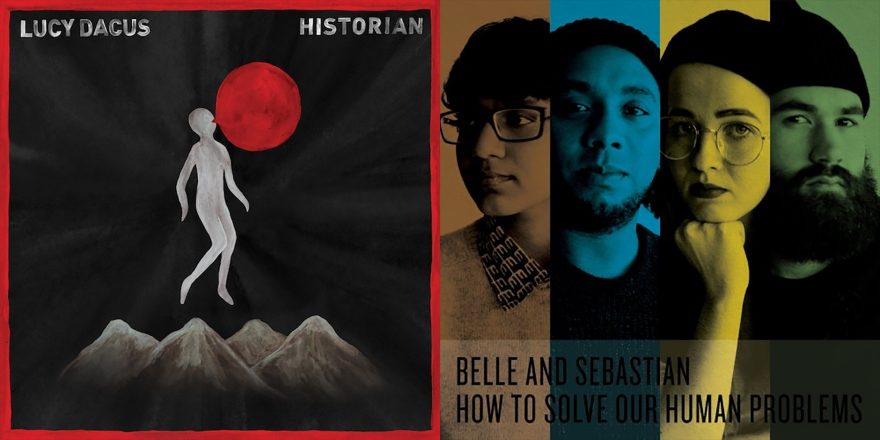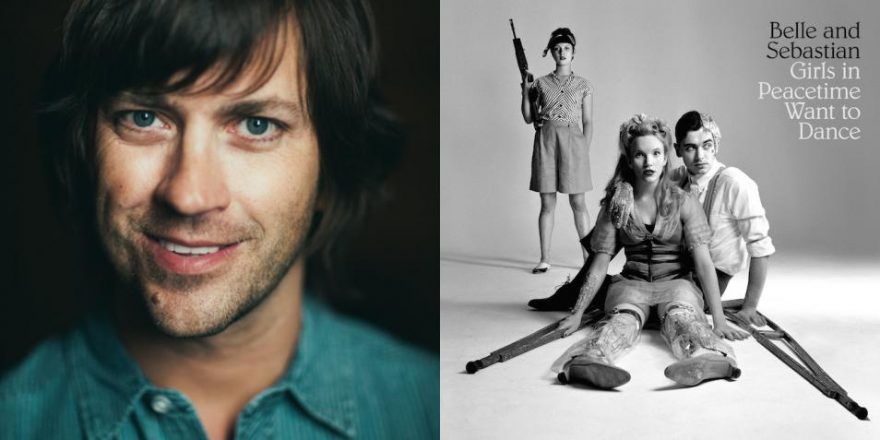Music has been used medicinally as long as anger and fear have been used politically. Belle and Sebastian have always been in the business of providing comfort for the disillusioned. The first EP of their three-part guide to optimism, How To Solve Our Human Problems Pt. 1, is full of simple wisdom and daily maxims we may know, but so easily forget.
The EP exhibits an all-inclusive pop sensibility, mixing dance, Americana, lounge jazz, ’60s psych, and synths galore. They’ve teamed up with various producers, Inflo and Leo Abrahams to name a few, and the collaborative spirit of the recording process comes through without being compositionally disjointed. It is both sonically and thematically bright, with occasional dips into darkness. The songs express frustration with the status quo–and the effort to be rid of that frustration itself–as well as ruminations on the transience of glamour and glory, but with a guiding hand rather than a slap on the wrist. Stuart Murdoch, the band’s lead singer and songwriter, is a humble preacher, humility being the necessary element in order to preach anything in the first place. In, “The Girl Doesn’t Get It,” he says:
Are you living or waiting
For the times to get better?
Between sorrow and nothing, choose pain.
If compassion was honored,
All our dumb human problems
Would be long in a bin marked “History.”
If not for the anachronistic synth after the choruses, “Sweet Dew Lee,” the first track on the album, sounds like you’d hear it in a lounge in the early 70’s . The characters are familiar: a lover unrequitedly pining for the dream girl who got away. “I once held you in a bold caress / But now my nose is pressed against the glass.” Though the narrator is remorseful and carrying a lot of pain, the song sounds very light-hearted and catchy. The song is a portrait of a man who is ankles deep in the past, unable to move on: “I didn’t think, after twenty years, I’d be right back in the self-same places.”
“We Were Beautiful” starts with a somewhat sinister Eurotrash drumbeat worthy of a place on The Matrix soundtrack, but it doesn’t stay there. An unexpected warbling pedal steel line comes in halfway through the first verse, counterbalancing the choppy and metallic drums. The chorus lifts victoriously into warm brass, and the bridge is another departure, when staccato plucked strings provide a break from the drum track. It’s probably the most dynamic track on the album. The song is mostly in past tense, looking back and wondering where things went wrong, but there is a tonal change that suggests a future full of positive possibilities on the final line of the bridge: “You are not too old to change / Happy only comes after the pain.”
For those of us, however, that occasionally feel hopelessly stuck in our circumstances, “Fickle Season” is a encouraging slow jam that serves as a reminder that all natural elements are subject to movement, change, and the passage of time. Humans are no exception. The wind, snow, birds, and rivers are all used as metaphorical examples of how people must adapt. Sarah Martin sings, “Carry purpose on your shoulder,” amidst playful xylophone and flutes lines. In a declaration of self-reliant belonging, she says “Home is anywhere you find me.” This is one for your stress-relief playlist.
“The Girl Doesn’t Get It” is a critique of cultural gullibility and modern capitalism. “Are you living, or waiting for the times to get better?” Murdoch asks the listener. Beauty standards, the superiority of youth, the myth of a one true love, “profits over people,” two-faced public figures, and children raised on the internet are all called into question here. A lot of criticism adeptly locates issues and points to what’s wrong, but lacks solutions to these human problems. Luckily, in this song, Murdoch does have a suggestion as to how one might release oneself from the worries and darkness of daily life thusly: “You should dance ’til your heart is joyful.” Doing so along to this song would be easy with its consistent, high-energy drumbeat, bubbly keyboards, and “ba-da-da” background vocals towards the end.
You know that time when you and your older cousin sneaked out of the family reunion at night to smoke a joint on the roof, and he blew your mind with heady philosophy your 15-year-old brain could hardly handle? It would have been fitting if you had been listening to “Everything Is Now,” the final track of this EP. The organ, clapping, group vocal, and the repetitive lyric- “everything is now, everything is different now”- makes the song sound like something you’d hear at church or a peaceful protest. The middle of the song is a four-minute jam without vocals, which serves a nice purpose at the end of the record by allowing listeners a little empty space to reflect on what they’ve listened to- a record that contains anger and discontent, but ultimately expresses a belief in a better future.
How To Solve Our Human Problems Pt. 1 might not bring about world peace, but Belle and Sebastian have succeeded in providing insights and truths that, if taken to heart, might make the world better, one listener at a time. They make it sound fun.






